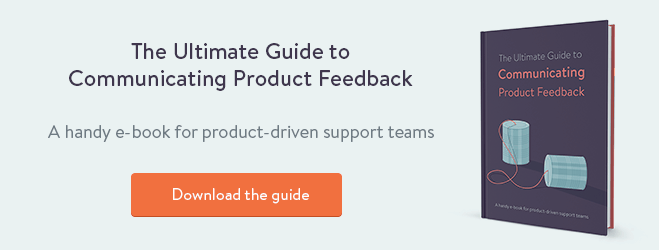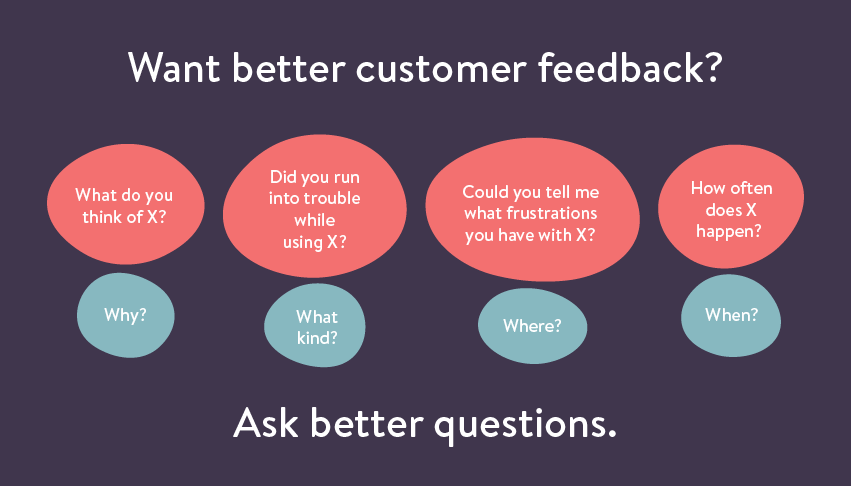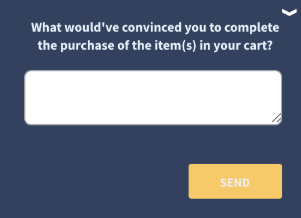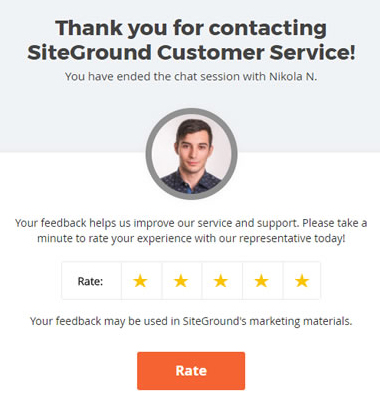When collected and implemented properly, customer feedback can help improve your product and the services that support it. Learning of how customers perceive your business is critical to building a customer-centric culture that strives to provide the best possible experience for prospects and customers alike. In this article we are going to explore the best and most effective ways to approach customers for feedback.
Why don’t customers leave feedback?
Honestly, why would they? Approaching customers for feedback the right way makes all the difference. Sending a request for feedback with a “Feel free to let me know what you think” doesn’t inspire people to respond. If you’ve been taking this “feel free” approach, the message you’ve really been sending across is “Eh, we could do with or without your input.” You must play to the motivation of why people write online reviews. When you’re essentially mining for free data and insights from your customers, this is actually a pretty rude way to do it. Is it really any wonder response rates are low when they’re asked with such indifference? You must prove that their feedback — should they choose to give it — will not be thrown into a shoebox and forgotten. If you really want something as precious as honest customer feedback, you must be proper and intentional. Which brings us to the first point:
Are you ready to deliver Friction-Free Customer Service? Capture your customer’s entire journey in a way a support ticket or traditional help desk never could. Discover Kayako Single View
1. Know why you’re asking for customers feedback
Ask yourself why you’re asking for customer feedback. Are you looking to better your product by learning from customers how existing functionality may be improved? What features your users would want to see in your product? Or whether or not customers are satisfied with the level of support you’re providing? You can learn where you’re lacking by asking questions specific to one area of your business. This helps users dig in and consider one aspect that they’ve experienced and be somewhat critical of it.
Lars Lofgren on asking for customer feedback and using it to improve product “If you don’t use the information you’re asking for, you’re wasting your customer’s time. You’re also wasting yours. You’ll have a whole batch of responses to look through and none of them will make a difference. Instead, save time and get better responses, by including only the essential questions.” – Kissmetrics’ Lars Lorgren.
When reaching out to customers look into the most effective ways to gather feedback. What questions work for you and which channels are customers most responsive on.
2. Open a conversation
When approaching customers for feedback make sure to ask questions that encourage a free flowing response rather than simply a YES/NO or a 3.5 out of 5. “Ask what, not why,” says Claire Lew at Know Your Company. “For example, when you ask, “Do you have any frustrations?” it’s very easy for the person to default and say “no.” But when you ask, “What could be better in the company?” that question assumes that there are things that could be better. It opens the opportunity for someone to provide a more honest answer.” While asking questions, dig for information that can really help you improve that area of your business that needs improvement. If the goal is to improve an outstanding issue some customers have been facing, ask how often the problem occurs — frequently? Not very often? When was the last time it happened? Keep prompting and digging until you hit on a conversation. When reaching out through email one of the best ways to prompt a response is by ending the email with a simple “What do you think?” to invite a response. It’s not only the polite thing to do at the end of what’s essentially a monologue, but it’s a simple and assertive way to request a dialogue. Squarespace takes a similar approach in its initial request for feedback: 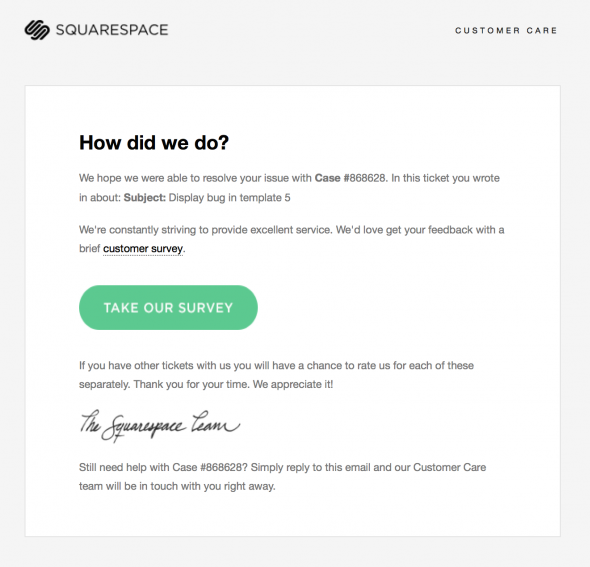
3. Ask the right person the right questions.
But even something as simple as “What do you think?” can be too big a question. Stefano Bernardi at Betable offers the following advice:
Ask about parts, not just the whole.
“If you end your email with: “Can you give me some feedback?” I can guarantee you won’t be getting a ton of responses. Instead, you need to think about the strengths and skills of that person and ask for feedback on something specific, related to those skills.” This is how Quora surveys its customers: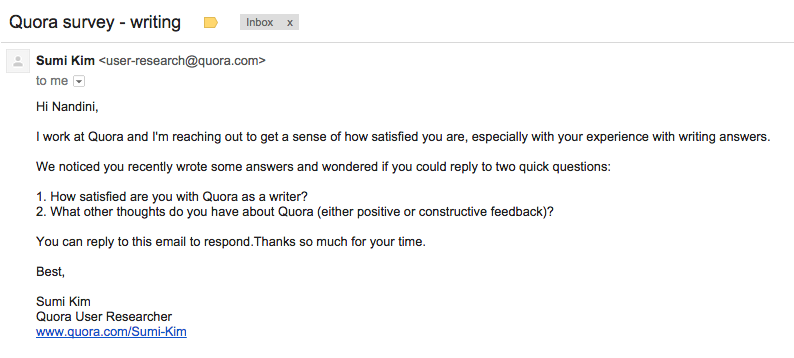
This email’s a winner for a couple of reasons:
- Sent from a real person, not “Quora Customer Service”
- Narrows the line of questioning to the recipient’s experience as a writer (not just “how do you like Quora?)
- Includes why they chose to get in touch (“We noticed you recently wrote answers”)
If you don’t have a template of your own, borrow this one!
4. Serve Feedback Forms
A short form on your website can work wonders when it comes to encouraging customers to provide feedback. However, at the end of the day it does boil down to what your goal is. If you’re looking to improve your help center articles, get an idea of why someone abandoned their shopping cart, or how good a live chat experience was, then feedback forms are the way to go. Remember not to ask more questions than absolutely necessary in your form and always make the effort to ask the ‘right’ questions as that will ultimately determine the success of your campaign.
a) Help Center Article Feedback Several websites have knowledge base articles for topics with a message at the end of the article asking whether or not the article was helpful. Google does this with all of their support articles.
This practice encourages users to click either yes or no letting you know if the article was in fact helpful. If a user does not find a resource to be helpful, present them with one simple question – ‘How can we improve?’
b) Cart Abandonment When a user leaves their shopping cart it means something went terribly wrong. To get to the bottom of why they decided against a purchase, services like Qualaroo provide exit surveys/feedback forms that can be served when a user abandons their shopping cart. If you could ask one question, I’d recommend you go with ‘What would have convinced you to complete the purchase of the item(s) in your cart?
This approach encourages a user to type what they feel would have convinced them to complete the purchase. If you offer up multiple choices, you restrict the user to pre-defined outcomes that you ‘feel’ are possible reasons for abandoning a cart. You may get fewer responses this way, but the ones you get will be thought out and helpful. c) Live Chat After helping a customer or a prospect, asking for feedback on their live chat experience is something many businesses are now doing. The timing is perfect as the user has very recently been assisted by a live agent. Let’s look at this example from hosting company, SiteGround. At the end of the live chat session a user is served a pop-up requesting feedback on the agent’s performance so they may improve their service and support.
This approach encourages users to rate the chat. Unless the service provided was absolutely useless, customers and prospects will more often than not give Nikola N a 5 star rating.
5. Get Survey & NPS Results
Getting customers and prospects to respond to a survey can help you learn what they like about your business and what they don’t. The real challenge lies in getting your audience to respond to your survey. When sending users a survey email always remember to use a well thought out subject line. This one area will determine the success of your survey. If the subject is not catchy and doesn’t interest your customer – your survey is not going to get any responses. If you’re of the opinion asking fewer questions is better, then Net Promoter Score is the way to go.
You can email the NPS survey using Survey Monkey or you could serve it as a pop-up on your website.
Are you ready to increase your team’s efficiency? Provide a better employee experience and speed up internal support with Kayako HelpDesk. Discover Kayako Self Service
6. Conduct Social Media Polls
These days businesses can gather important data through polls conducted across all major social platforms such as Facebook, Twitter, LinkedIn and Instagram. Here’s an example of how McDonald’s conducted a poll on twitter to understand what 2 for $2 menu items customers were more likely to order.
Conducting polls across social channels allows your business to informally engage users through fun, and easy questions for which results are displayed immediately after one has cast their vote. It’s a fantastic way to engage customers and prospects to get feedback and gain insight into what aspects of a product or service users appreciate and where things may be improved.
7. Send a personal note of thanks + follow up (not optional)
What happens when the feedback you received from a customer ends up being incorporated in a product update or a policy change? If the answer is “nothing,” then you’re leaving brownie points on the table. Customers love to know that they were heard. The simplest, most underutilized engagement opportunity is the personal follow up note. What a powerful way to make your customers feel closer to you, perhaps even part of your company’s growth story. There should be a B2B jail for those who squander this golden engagement opportunity. Especially because you can follow up easily, no matter the size of your business.
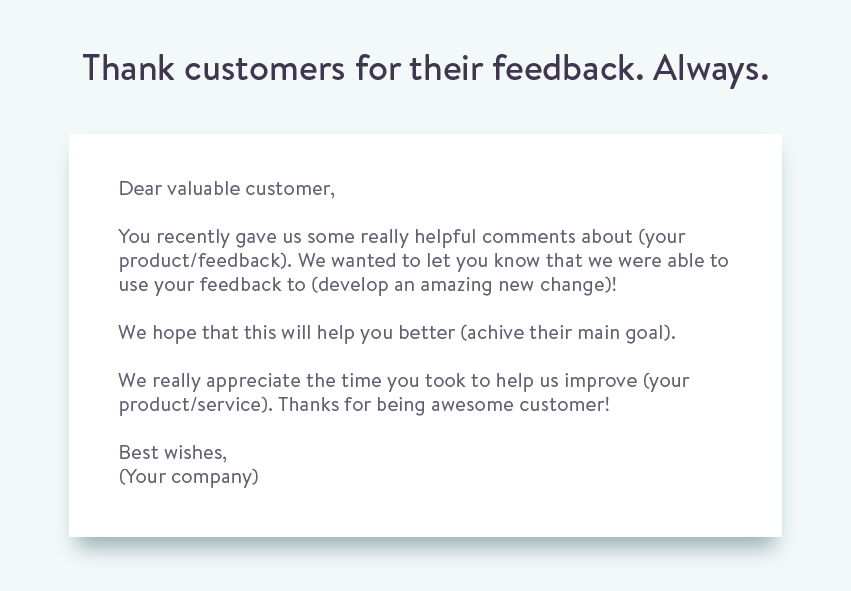
Once, a customer’s feedback proved so valuable that I continued to follow up with her as we developed our new Getting Started Guide: Hi XXXXXX, I just wanted to drop a quick note to see how you’re doing with Kayako. Meanwhile, we’re finishing up a brand new “Getting Started Guide” that took a lot of inspiration from our chat. I’d love to send it your way and see what you think. Would that be something you’d be interested in? I’m interested to understand whether this guide (or something like it) would save you time while training your new reps. Let me know! It’s not unlike the short note you’d drop after attending a job interview or a coffee date. Whenever possible, give your customer’s feedback on their feedback. After all, they’re taking time out of their day to tell you why they’re doing business with you (or not).
